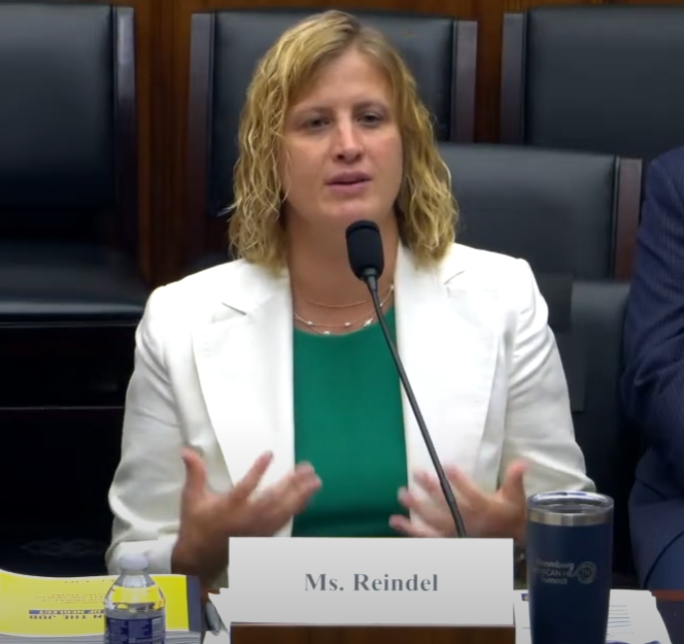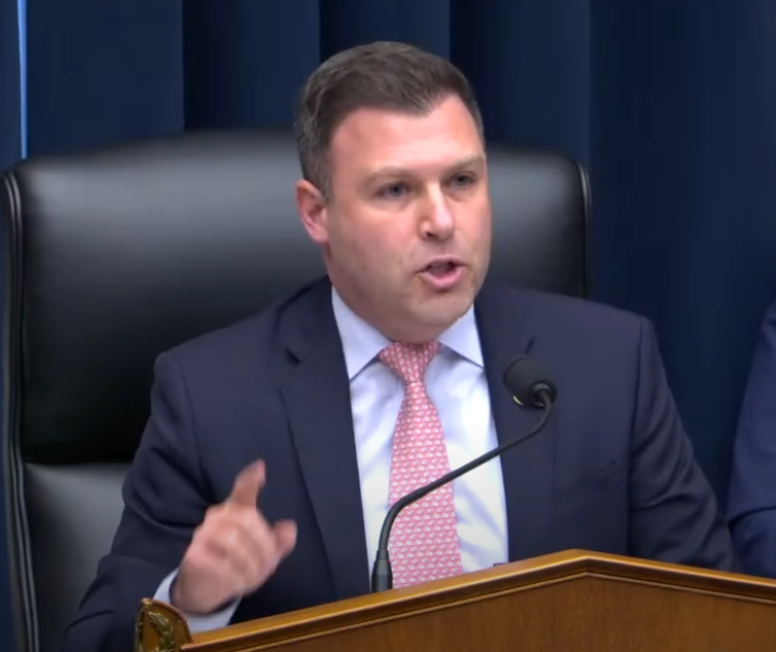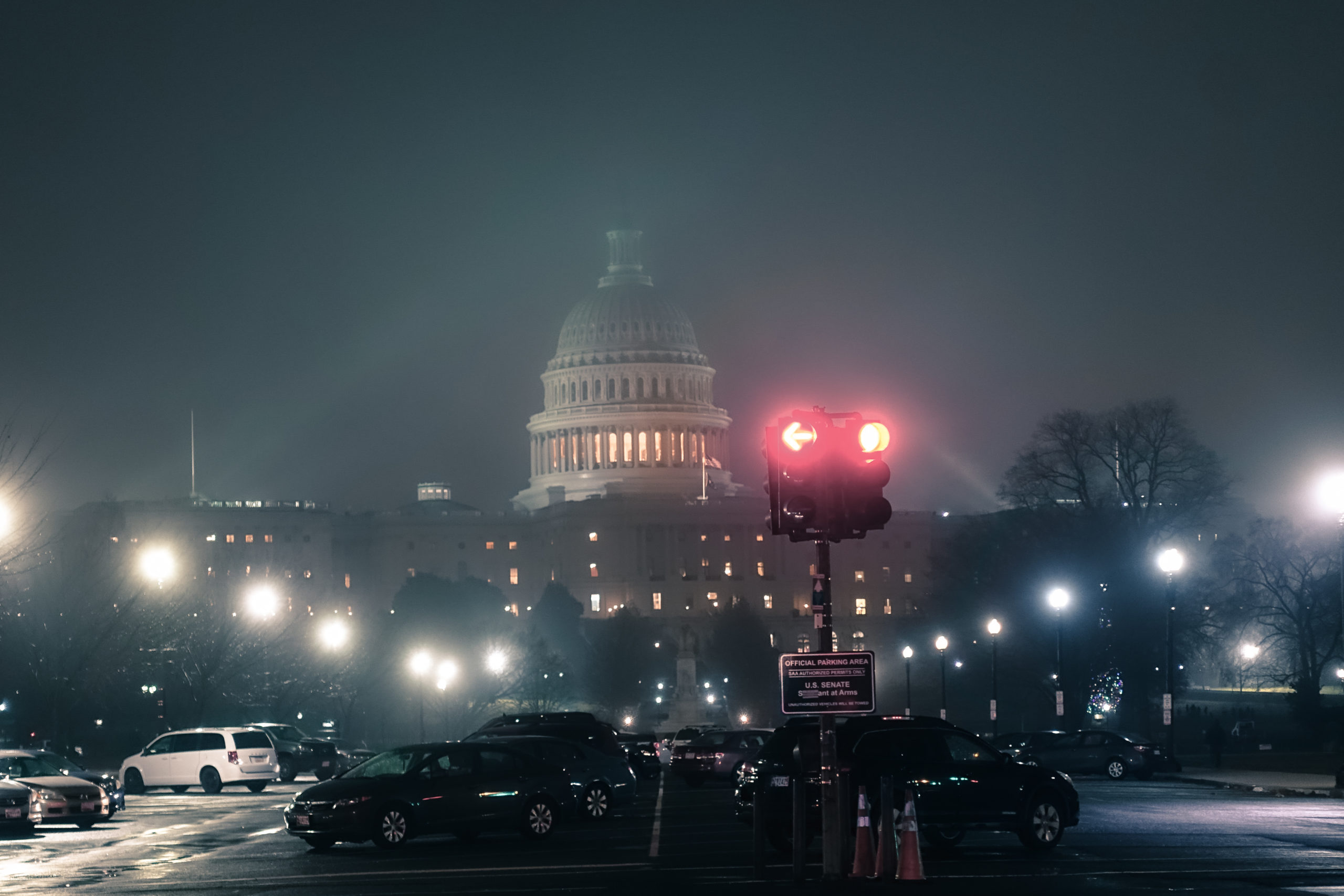In powerful testimony before the House Education and Labor Workforce Committee yesterday, AFL-CIO Health and Safety Director Rebecca Reindel warned that Trump’s proposed cuts to OSHA’s budget would mean that it will take 266 years to inspect every workplace in the country, up from once every 186 years in 2024.
As Reindel said, “These numbers are not a game; these cuts directly impact people’s lives. American workers have been left behind. They are being forced into an impossible choice—that between their lives and their livelihoods.”
Along with the destruction of the National Institute for Occupational Safety and Health (NIOSH), the decimation of OSHA’s enforcement program and the reduction of penalties announced last week can mean only one thing: more preventable workplace deaths, injuries and illnesses.
The hearing was billed by Republicans as a hearing to explore (and promote) OSHA’s compliance assistance programs over strong enforcement, but Democrats hijacked the hearing to focus instead on Trump’s deadly assault on worker health and safety.
Testifying for the Republican majority were Chris Williams, Executive Director of the Voluntary Protection Programs Participants’ Association, Myron Harper, Health and Safety Director of Cintas Corporation and Kevin Sell, Senior Manager for Corporate Development of Kwest Group, who was testifying on behalf of the Associated Builders and Contractors.
Trump’s Assault on Worker’ Lives
Reindel wasted no time in her testimony getting to the real heart of the issue:

Each year in the US more than 5,000 workers die on the job from traumatic injury and an estimated 135,000 die each year from work related disease. The families of these workers suffer the consequences and these are devastating and they’re preventable.
So what we are talking about today are not just numbers and goals and achievements. They are people’s lives.
Yet the job safety enforcement agency for most workplaces, OSHA, has been starved by budget cuts and hampered by staffing reductions and low penalty structures that keep it from carrying out its core responsibilities entrusted to it by Congress. Even before the Trump administration’s recent efforts that will reduce these resources even more, between 1991 and 2024, OSHA’s budget decreased 8%. In the last 35 years, we have seen a 19% reduction in all of OSHA’s staff, including at headquarters. And that and with a whopping 35% decrease in enforcement staff alone.
Meanwhile, employment has grown 43% and workplaces have grown 82%. Overall, this is a 38% reduction in the amount the agency has to protect each worker it is responsible for. Now, only $3.92 for each worker.
And then she dropped the jaw-dropping fact that if Trump’s budget proposal is passed, it will take two and a half centuries to inspect each workplace in the country just once. (Just to put that in perspective, 254 years is 5 years longer than the United States has been in existence. At that rate, OSHA inspectors would just now be getting ready to inspect George Washington’s Mt. Vernon estate.)
And then Reindel dropped the jaw-dropping fact that if Trump’s budget proposal is passed, it will take two and a half centuries to inspect each workplace in the country just once.
During the question period, Reindel emphasized the current low level of OSHA penalties and the damage Trump is doing by reducing OSHA penalties and weakening enforcement, noting that the new penalty reduction policies “give employers an incentive to take the low road and not follow the law.”
And in response to a question from Rep. Mark Takano (D-CA), she described the devastation caused to the safety of miners and other workers caused by Trump’s decimation of the NIOSH –especially the warehouse workers who populate Mr. Takano’s district and suffer high rates of musculoskeletal disorders and heat illness.
NIOSH is really our major — our only source in the government for critical research on health and safety issues. It also already has a lot of industry partnerships, a lot of academic partnerships, real implementation on the ground of preventing workplace injuries and illnesses, practically in real time and also conducting surveillance so that we actually know what’s going on in workplaces throughout the states.
Background: What is Compliance Assistance?
As I said above, the Republicans intended the hearing to explore (and promote) OSHA’s compliance assistance programs over strong enforcement. So what are they talking about?
Compliance assistance includes training, fact sheets and general education. Many of these activities are performed by OSHA’s Compliance Assistance Specialists throughout the country. It also includes many of OSHA’s “voluntary” health and safety programs that OSHA runs. The main federal compliance assistance budget item funds all the fact sheets and outreach documents on OSHA’s website and supports the OSHA Training Institute, which provides training for OSHA inspectors.
OSHA also has specific compliance assistance programs. Its Onsite Consultation Program provides free onsite “inspections” by state consultants for small businesses that identify problems and solutions, without the risk of citations and penalties. OSHA’s Voluntary Protection Programs highlights medium and large employers who exceed OSHA requirements and, in return, are exempt from OSHA’s programmed inspections.
Programmed inspections are pro-active inspections of employers who have high injury and illness numbers, or fall into a hazard or industry targeted by OSHA emphasis programs.
OSHA also forms “Alliances” with business associations and a few unions to work cooperatively on industry problems or specific hazards. Finally, the Susan Harwood Worker Training Grant program provides grants to non-profit groups: unions, business associations, universities, COSH groups and others — to building training programs and materials for high risk workers.
The entire budget of OSHA’s compliance assistance programs is a not-insignificant $154 million in FY 2025.
The entire budget of OSHA’s compliance assistance programs is a not-insignificant $154 million in FY 2025. I have nothing against compliance assistance in general. It serves an important purpose. But as Reindel explained, “Compliance assistance is an important part of the OSHA model, but only as an aid to support the mandate the agency was given by Congress, not a replacement for it.”
The bottom line is that large businesses don’t really need OSHA compliance assistance VPP and most of the work of the Compliance Assistance Specialists are focused on employers that have already decided to boost their health and safety efforts, and therefore request compliance assistance.
Large businesses don’t really need OSHA compliance assistance.
Small businesses who want to do the right thing, on the other hand, may not be able to afford full time safety staff or to hire consultants, which is a problem. But the Onsite Consultation Program takes care of that.
Those most in need of compliance assistance are vulnerable workers. And Trump is proposing to eliminate the Susan Harwood grants, the main program that addresses the concerns of vulnerable workers.
The Harwood program is one of the few OSHA programs that focuses on workers—and specifically high-risk, vulnerable employees who either work for employers who do not emphasize safety and health on the job, or for small employers who see the value of working closely with a better trained workforce.
Republican Assault on Enforcement and Worship of Compliance Assistance
This hearing — and the general Republican ideology — falsely believes that whereas enforcement is only reactive and overly confrontational and punitive, compliance assistance is friendly, cooperative and, most important, pro-active — saving lives before incidents injure or kill workers. For example, Workforce Protection Subcommittee Chair Ryan Mackenzie (R-PA) claimed: “Instead of relying solely on inspections and investigations after a violation happens, compliance assistance programs encourage a proactive approach to safety, which is essential to any effective health and safety management system.”
This is, of course, false. The main purpose of OSHA’s enforcement program — inspections, citations, penalties, and (rarely) criminal indictments — is deterrence: the fear of an OSHA inspection, financial penalties and bad publicity through press releases are intended to deter low-road employers from cutting corners on safety.
Research provides convincing evidence that OSHA enforcement prevents injuries (and without costing jobs.) In 2012, Science published a peer-reviewed study by the Business Schools of the University of California and Harvard University. This study looked at the impact of random OSHA inspections in California and found that inspections reduce injury rates, while saving employers billions of dollars through reduced workers’ compensation costs, with no detectable job loss. This study was accompanied by others in Washington and Pennsylvania, which showed similar results.
The irony of these Republican lies is that Trump’s budget severely undermines the “proactive approach to safety.” Trump has proposed to cut OSHA’s enforcement budget by almost 10% and to cut the number of inspections OSHA conducts by almost 30%. But because OSHA is required to prioritize “unprogrammed inspections” — those responding to a death, multiple hospitalizations, referrals and worker complaints — the inspections that will suffer most from the cut in enforcement staff will be OSHA’s proactive “programmed inspections.”
But not only is Trump also proposing to eliminate OSHA’s $12 million Harwood grant program, and this great friend of small business is also proposing a 2% cut in federal compliance assistance, and a 1% cut in the Onsite Consultation Program.
What’s behind this hearing?
Aside from their compulsion to criticize any kind of OSHA standard and enforcement, Republicans are attempting to do the bidding of the Voluntary Protection Programs Participant’s Association (VPPPA) which is pushing for the passage of H.R.2844 – Michael Enzi Voluntary Protection Program Act which would codify VPP permanently into the law, lower the standards for entry and, finally, require OSHA to spend a whopping 5% of it’s budget on VPP.
Based on this year’s budget, that would be $31.6 million — two and a half times what OSHA currently spends on the Harwood program, $10 million more than Trump is proposing to spend on OSHA’s whistleblower program and $15 million more than Trump is proposing to spend on developing new OSHA standards and guidance.
I’m not overly worried about the bill passing. Right now it only has two sponsors. But you never know with these guys….
You can read more of what I wrote about the worth of VPP here, and the Biden administration’s ill-fated plan to “modernize” the program here.
But a few things to summarize:
First, it is true that VPP companies have better health and safety programs and records than the average company. But don’t confuse cause and effect. VPP didn’t cause these companies to do better. While VPP participants clearly have better safety and health records than the average company, they already had a better safety record before going into a VPP.
The statement that VPP participants have better safety records than non-participants mixes up cause and effect. These companies are in VPP because of their superior safety records. They don’t have superior safety records because of VPP.
The statement that VPP participants have better safety records than non-participants mixes up cause and effect. These companies are in VPP because of their superior safety records. They don’t have superior safety records because of VPP.
Companies make a decision to improve their safety and health program for various reasons — sudden enlightenment, new management, or a history of fatalities, injuries and bad publicity, etc.) and then later decide to join VPP to help improve their program. It’s not the other way around, where VPP suddenly inspires a low-road employer to clean up its act or bestowing VPP status automatically reduces a company’s injury and illness rate. In fact, as the Government Accountability Office has documented, there has never been an authoritative study showing the effectiveness of VPP.
Second, even in the best of times, OSHA has limited resources. So the agency must decide where to dedicate those resources: to help good companies improve their programs a little bit more (VPP), or to use enforcement to ensure that low-road employers stop injuring and killing their employees. Just deciding to double or triple the size of VPP isn’t going to induce a single low-road employer to suddenly become an exemplary corporate citizen.
Third, the last time OSHA decided that VPP was the future of the agency (during George W. Bush administration) the outcome was disastrous. In order to meet VPP growth quotas, OSHA officials admitted companies that had marginal programs, refused to kick out employers who killed workers or received willful violations, and fell way behind on VPP recertifications which are supposed to happen every three to five years.
And finally, on a slightly more personal note. I would welcome an organization of companies who go above and beyond OSHA requirements and still make a good profit. In addition to making protecting workers, such an organization could be a welcome and powerful force in the battles over OSHA standards, in the fight for increased funding and against weakening OSHA, MSHA and NIOSH.
But I can’t recall one time when the VPPPA has ever testified or lobbied in favor of an OSHA standard, or testified before Congress in favor of higher OSHA budgets or a stronger law. Not one time. Have they sent letters pleading with Congress to save NIOSH? Have they sent letters opposing Trump’s draconian budget proposal? Not that I’ve seen. Not a word. (Please feel free to correct me if I’m wrong.)
VPPPA holds great conferences and provides valuable support to its members. But ultimately, the VPPPA is about only one thing: Growing VPP. Period.
The Child Labor Digression
OK, enough rant.

It is highly ironic that Chairman Mackenzie should be complaining about how little the Biden administration did when the Trump administration is currently proposing to cut the budget of Wage and Hour, and weaken regulations that protect children against dangerous work.
